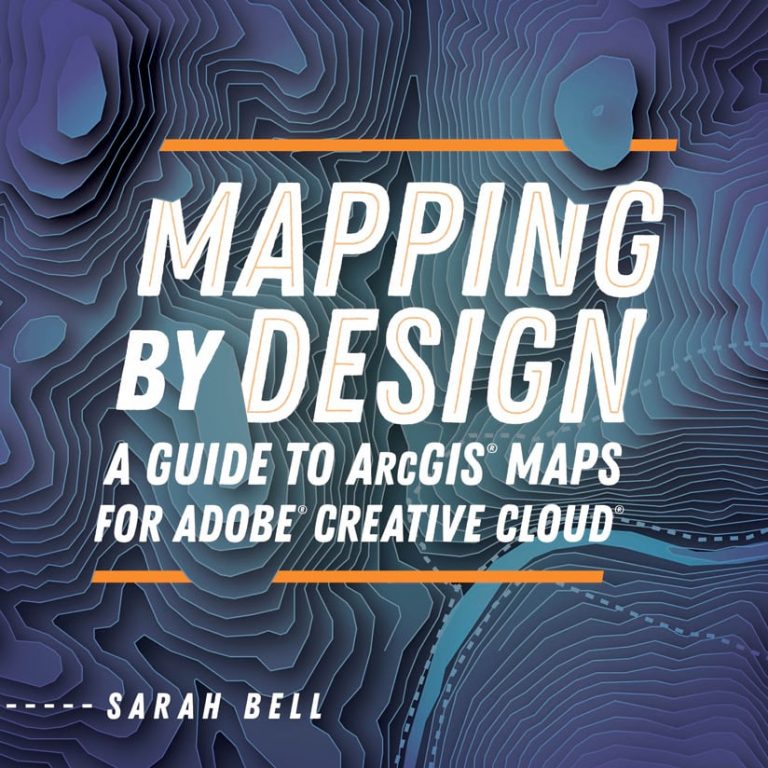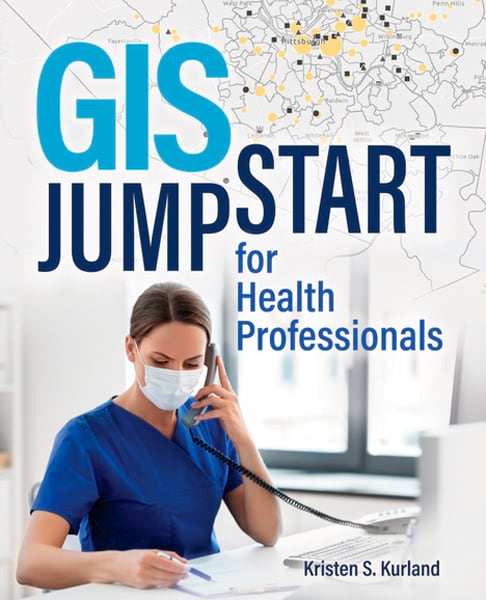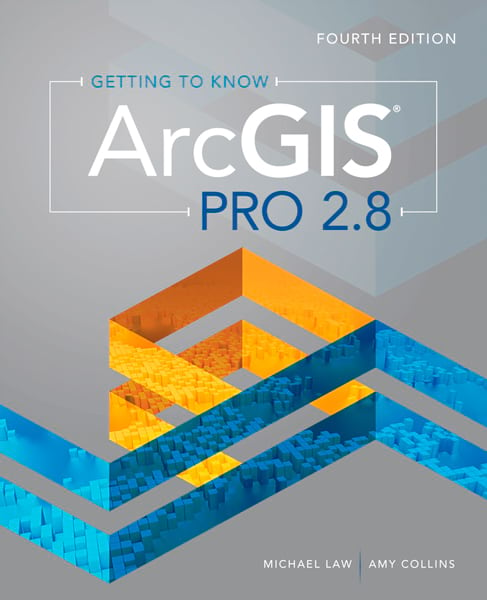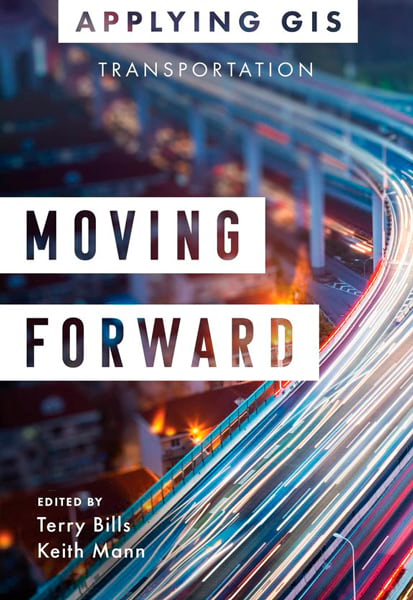Esri Press has published four new books that focus on GIS technology in the health and transportation fields, provide an instructional guide to learning how to use ArcGIS Pro (updated for the ArcGIS 2.8 release), and showcase how to up your map creation game with ArcGIS Maps for Adobe Creative Cloud.
Mapping by Design: A Guide to ArcGIS Maps for Adobe Creative Cloud
Esri cartographer Sarah Bell, author of Mapping by Design: A Guide to ArcGIS Maps for Adobe Creative Cloud, believes that while learning to create maps is hard work, it’s also a fun and creative endeavor that is constantly evolving.
“Even we professional cartographers are still students of the craft,” she wrote. “It is, in part, this feeling of perpetual newness that fuels my passion for cartography.”
Besides being a cartographer, Bell is also the lead product engineer for ArcGIS Maps for Adobe Creative Cloud—a product that she uses to make beautiful, artistic maps of everything from rock-climbing sites to donut shop locations. In Mapping by Design, she uses her knowledge of and skills with Maps for Adobe Creative Cloud to guide readers through how to use the software and Adobe Illustrator to craft informative and visually compelling stories with maps.

Readers who complete the book’s tutorials will learn how to do the following:
- Work with the user interface components of Maps for Adobe Creative Cloud.
- Make maps using common workflows.
- Perform custom geospatial analysis.
- Use automated custom symbology and map elements.
- Integrate Maps for Adobe Creative Cloud into ArcGIS Pro cartographic workflows.
The book includes a 180-day trial license of ArcGIS software.
Bell has been a professional mapmaker for more than 10 years. She started her career at the National Park Service as a park ranger in North Cascades National Park in Washington state, where she also began making climbing maps of Mount Rainier. She earned a master of science degree in geography from Western Washington University. She worked as a cartographer for a firm in Bellingham, Washington, and at Western Washington University’s Resilience Institute before joining Esri in 2013. In her free time, she enjoys rock-climbing and creating hand-drawn maps of the climbing terrain.
(Print edition ISBN: 9781589486041, $59.99; ebook edition ISBN: 9781589486058, $59.99)
GIS Jump Start for Health Professionals
Though mapping has long been important in the public health field (think John Snow and his cholera map), the COVID-19 pandemic brought the connection between health and geography to the forefront. In early 2020, a team at Johns Hopkins University used ArcGIS Dashboards to create a global COVID-19 dashboard that mapped cases of and deaths from the disease. It has been viewed billions of times. Since then, a flurry of American states, counties, and cities have used ArcGIS Dashboards and ArcGIS Hub to share COVID-19 information with the public.
Learning how to use GIS to visualize and analyze health information is the focus of the new book GIS Jump Start for Health Professionals. According to the book’s author Kristen S. Kurland, geography and health are strongly linked, and GIS is useful for everything from studying disease to analyzing health-care needs in a particular geographic area. “Public health agencies use GIS to map health status, identify disease clusters, investigate environmental health problems, and understand the spread of communicable and infectious disease,” Kurland wrote.

GIS Jump Start for Health Professionals brings people working in various aspects of the health profession quickly up to speed on location analytics. Chapters focus on the following topics:
- GIS capabilities, including spatial analysis, and real-life examples of the technology’s applications in the health field
- Health map design, including an overview of the principles of graphic elements and how to best use color
- How to map, visualize, and share health data
- Where to locate resources for health GIS projects, including how to access data from ArcGIS Living Atlas of the World and the US Census Bureau
- How to create, publish, and share a health GIS dashboard similar to the ones that were used to share information about the COVID-19 pandemic
The book includes step-by-step tutorials on how to design, create, share, and publish maps and dashboards using ArcGIS technology from Esri, including ArcGIS Online, ArcGIS StoryMaps, and ArcGIS Dashboards.
Kurland is the author of many Esri Press books including GIS Tutorial for Health and GIS Tutorial for ArcGIS Pro 2.8. She is a teaching professor of architecture, information systems, and public policy at the H. John Heinz III College and School of Architecture at Carnegie Mellon University.
(Print edition ISBN: 9781589486539, $39.99; ebook edition ISBN: 9781589486546, $39.99)
Getting to Know ArcGIS Pro 2.8
Getting to Know ArcGIS Pro 2.8 gives readers all the knowledge and information they need to start working with ArcGIS Pro software from Esri. No prior experience working with GIS software is necessary.
The book covers basic principles and concepts of GIS and introduces the tools and functions of the desktop GIS application. Readers then work on a series of exercises, where they learn how to visualize data, build a geodatabase, run a Python command and script tool, geocode location data, analyze spatial and temporal data, and create maps to share on the web or as a PDF file.

The book also comes with a handy glossary that offers clear definitions of GIS and ArcGIS terms that readers should familiarize themselves with such as coordinate system, geoprocessing, hot spot analysis, vector, and layer package. More than 300 full-color images will also help readers better understand complicated processes such as developing a geoprocessing model.
Getting to Know ArcGIS Pro 2.8 was cowritten by Michael Law, a Canada-based cartographer and GIS professional with more than 16 years of experience in the field, and Amy Collins, a writer and editor from Napa, California.
(Print edition ISBN: 9781589487017, $89.99; ebook edition ISBN: 9781589487024, $89.99)
Moving Forward: GIS For Transportation
With supply chain issues and the need for new transportation infrastructure in the news, it’s the perfect time to pick up a copy of Moving Forward: GIS for Transportation.
The book includes case studies on how organizations use GIS to improve operational efficiency, safety and security, asset management, and planning and sustainability in the field of transportation.
Readers will find out how Geneva Airport in Switzerland increased its operational efficiency by using GIS to better track passenger flow, aircraft location, baggage movement, and the loading and unloading of planes.

Meanwhile, a story about the Port of Rotterdam in the Netherlands showed how the port used GIS to grow its business despite not being able to expand due to lack of physical space. More than 1,000 digital maps are created daily, helping to guide operations and decision-making at the port and boosting efficiency. Port employees, for example, can access a map on a computer or mobile device, navigate to an area of interest such as a wharf, and click the wharf to access vital information including wharf maintenance, ship movements, and current contracts.
“Instead of being the biggest port in the world, which we were for decades, we want to be the best port in the world—[meaning] the most responsive to our customer needs,” said Erwin Rademaker, a program manager for the Port of Rotterdam Authority. GIS is helping the port meet that goal.
More than a dozen other stories about how GIS is being used in transportation are told in the book, including the New Zealand Transport Agency’s use of the technology to analyze road safety and the Wyoming Department of Transportation’s creation of the Wyoming Travel Information Map to provide travelers, including truck drivers, up-to-date road conditions, weather warnings, and wildfire information, plus rest area locations.
“Nearly every aspect of a transportation system is locational, meaning that every element of the system has a place on the earth and can be mapped and analyzed spatially,” wrote the book’s editors, Terry Bills and Keith Mann. “GIS provides a stronger sense of location intelligence across organizations, so that everyone–including transportation managers, engineers, planners, and repair crews—can develop a better understanding of where people and things are in relation to everything else. GIS analysis reveals unseen issues, vulnerabilities, and movement patterns that help transportation professionals work better together.”
Bills is the director of transportation for industry solutions at Esri, and Mann is a principal content strategist for Esri Press.
(Print edition ISBN: 9781589486928, $19.99; ebook edition ISBN: 9781589486935, $19.99)

